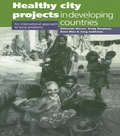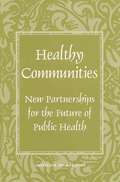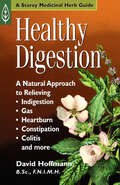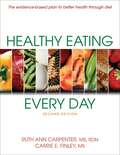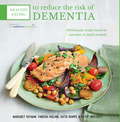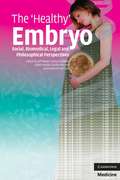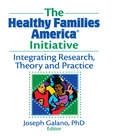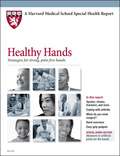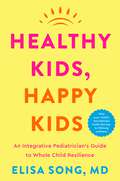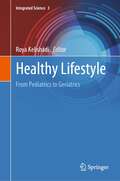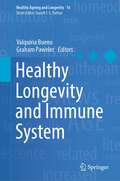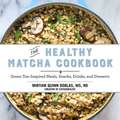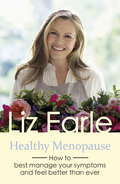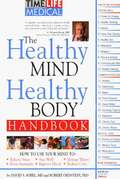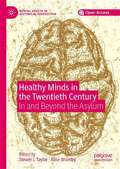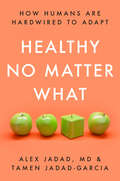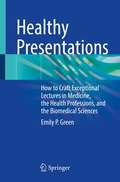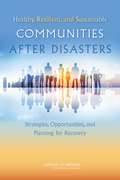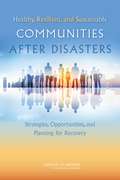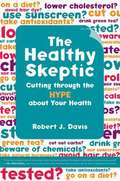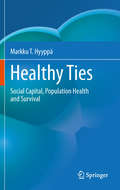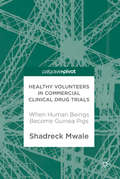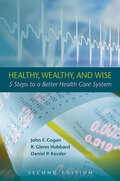- Table View
- List View
Healthy City Projects in Developing Countries: An International Approach to Local Problems
by Edmundo WernaWith the growth of cities and towns throughout the developing world have come significant health problems. The urban poor are particularly affected, faced with the worst of both worlds: urban problems such as pollution and stress, combined with infectious diseases common in both rural and urban areas. The Healthy City Project shows how to put health high on the agenda of urban officials, integrating it into all other planning and development decisions. Healthy City Projects in Developing Countries presents a comprehensive account of this very important and increasingly influential initiative. Drawing on experience in a range of cities it shows how to design, implement and evaluate the integration of public health into urban management. The results will be very significant to all those making and implementing urban policies, as well as those working in and on public health, urban development and environmental issues.
Healthy Communities: New Partnerships for the Future of Public Health
by Institute of Medicine Staff Michael A. Stoto Cynthia Abel Anne DievlerInformation on Healthy Communities and Public Health
Healthy Digestion: A Natural Approach to Relieving Indigestion, Gas, Heartburn, Constipation, Colitis, and More
by David HoffmannLearn to use herbs to treat a variety of digestive ailments and liver diseases. Noted herbal clinician David Hoffman explains the causes and symptoms of 14 common digestive concerns — including constipation, diarrhea, gas, heartburn, peptic ulcers, and gallstones — then offers simple herbal treatments and lifestyle changes. A comprehensive A-to-Z directory of the 37 herbs that most effective promote a healthy digestive system includes thorough preparation instructions and dosage information for gastrointestinal wellness.
Healthy Eating Every Day
by Ruth Ann Carpenter Carrie E. FinleyImprove your health and quality of life through balanced eating! Healthy Eating Every Day is a practical, evidence-based program that teaches you how to improve your eating habits in ways that fit your lifestyle.
Healthy Eating to Reduce The Risk of Dementia
by Margaret Rayman Katie SharpeDementia affects nearly 36 million people worldwide, with 7.7 million new cases every year, and has a dramatic impact on sufferers and their families. There is evidence, however, that a healthy lifestyle and diet, especially in mid-life, can help to reduce the risk of developing dementia. In this much-needed book, Margaret Rayman and her team of nutritional experts give clear and effective guidelines on how to adapt your diet and lifestyle to help protect you against this condition. In addition to general dietary advice, it includes 100 delicious and easy-to-follow recipes, all of which are based on two years of careful research. The detailed introduction summarises the team's findings and explains, in a clear and concise manner, what foods, food components and nutrients can help to protect the brain and keep it functioning to its best capacity. The introduction is followed by a tempting collection of recipes, such as Blueberry and Wheatgerm Pancakes for breakfast, Warm Chicken and Grapefruit Salad for lunch, and Baked Trout with White Wine and Fennel for dinner, with a tempting Chocolate Orange Mousse or a bright and zingy Cranberry Sorbet for dessert. The fantastic health benefits of these dishes are sure to make them a welcome addition at any stage of life.
Healthy Eating to Reduce The Risk of Dementia
by Professor Margaret Rayman Katie SharpeDementia affects nearly 36 million people worldwide, with 7.7 million new cases every year, and has a dramatic impact on sufferers and their families. There is evidence, however, that a healthy lifestyle and diet, especially in mid-life, can help to reduce the risk of developing dementia. In this much-needed book, Margaret Rayman and her team of nutritional experts give clear and effective guidelines on how to adapt your diet and lifestyle to help protect you against this condition. In addition to general dietary advice, it includes 100 delicious and easy-to-follow recipes, all of which are based on two years of careful research. The detailed introduction summarises the team's findings and explains, in a clear and concise manner, what foods, food components and nutrients can help to protect the brain and keep it functioning to its best capacity. The introduction is followed by a tempting collection of recipes, such as Blueberry and Wheatgerm Pancakes for breakfast, Warm Chicken and Grapefruit Salad for lunch, and Baked Trout with White Wine and Fennel for dinner, with a tempting Chocolate Orange Mousse or a bright and zingy Cranberry Sorbet for dessert. The fantastic health benefits of these dishes are sure to make them a welcome addition at any stage of life.
The 'Healthy' Embryo: Social, Biomedical, Legal and Philosophical Perspectives
by Jeff Nisker Françoise Baylis Isabel Karpin Carolyn Mcleod Roxanne MykitiukThe ever-increasing use of assisted human reproduction technology and the use of human embryos to derive stem cells will ensure that the ethical, legal, and social issues explored in The 'Healthy' Embryo: Social, Biomedical, Legal and Philosophical Perspectives will remain the focus of public attention and subjects of debate and research across many academic disciplines.
The Healthy Families America Initiative: Integrating Research, Theory and Practice
by Joseph GalanoChild abuse and neglect are social and public health problems that need to be addressed by strong policies and dynamic initiatives that show quantifiable results. The Healthy Families America® Initiative: Integrating Research, Theory and Practice is the most up-to-date examination of the home visitation program aimed at preventing child abuse and neglect. This contemporary and comprehensive summary of research and practice contains five empirical articles at the national, state, and multi-state levels, scholarly reviews, insights into Healthy Families America® (HFA) challenges and successes, and commentaries about the next steps for HFA. This detailed study of HFA is a roadmap for prevention efforts of the future, discussing in detail its past and present, the benefits and challenges of researcher/practitioner partnerships, and expert suggestions to improve practice. Healthy Families America is a program that works to help new families give their children a healthy, abuse- and neglect-free environment in which to grow. The Healthy Families America® Initiative: Integrating Research, Theory and Practice looks closely at the research to assess whether or not the program has actually attained its projected goals. This book comprehensively discusses the programs from both micro and macro perspectives, while offering practical strategies to strengthen HFA and guide the next phase of child abuse prevention. This resource also provides several tables to clearly present research data and is extensively referenced. The Healthy Families America® Initiative: Integrating Research, Theory and Practice covers the history of HFA; challenges and successes associated with its expansion as a national prevention initiative; the credentialing process; the evolution of the HFA Research to Practice Network (RPN); information on Every Child Succeeds and Healthy Families Arizona programs, and what makes them work; the theory, research, and practical constraints of developing, implementing, and evaluating a multi-site and statewide HFA program; the Web-based eECS system that optimizes quality assurance and collects data to document and identify clinical needs; an overview of the literature on home visiting outcomes; a current comprehensive summary of HFA outcomes; and suggestions on how to frame child abuse and neglect prevention to best impact citizens and public policy. The Healthy Families America® Initiative: Integrating Research, Theory and Practice is essential reading for professionals involved in child abuse and neglect prevention and treatment, community psychologists, professionals involved in prevention and health promotion, child advocates, HFA’s program evaluators and practitioners, sociologists, and policymakers.
Healthy Hands: Strategies for strong, pain-free hands
by WendinIs hand pain interfering with your ability to do all you want and need to do? Find out how you can ease the pain and limitations of arthritis, carpal tunnel syndrome, and other hand ailments. Hands are unavoidably vulnerable to ailments and injuries. When they happen, your daily routine can become an ordeal, ordinary tasks can become a struggle, and simple pleasures are put aside. Fortunately, almost every hand problem can be successfully treated. Pain can be significantly reduced. Mobility and dexterity can be regained. This Special Health Report will give you an empowering understanding of your hands mechanics, the diseases that compromise their function, and most important, what you can do to treat, lessen, and prevent the major threats to your hands health and strength. Do you suffer with arthritis? The report will brief you on advances in quelling the symptoms. Youll find out about the growing choices in medications as well as promising complementary therapies and alternative remedies. The report will tell you about treatments that offer relief from carpal tunnel and other pinched nerve syndromes. Youll learn what causes trigger finger and how writers cramp is cured. The report will give you the key questions to ask yourself and your doctor before considering joint replacement surgery, and much more. So, enjoy life hands on. Order your copy of this Special Health Report now. Inside Healthy Hands, you'll discover: How the most popular oral and topical arthritis meds compare Practical tips for avoiding repetitive-stress injuries What to ask when selecting a hand therapist or surgeon The new injection thats freeing immovably curled fingers 12 exercises for stronger, more flexible hands A third surgical option for carpal tunnel syndrome The hand ailment that affects women 10 times more often than men
Healthy Kids, Happy Kids: An Integrative Pediatrician's Guide to Whole Child Resilience
by Elisa Song M.D.Do you want to know the key to raising resilient kids, from the inside out? In this groundbreaking, evidence-based guide to raising healthy kids in our modern world, Dr. Elisa Song bridges the gap between conventional and holistic pediatrics and delivers a clear roadmap to help kids thrive.Raising healthy, happy kids shouldn’t be so hard. Yet, despite living in what should be a golden age of medicine, our children are sicker than ever. At least 1 in 5 kids has eczema, and 1 in 10 has asthma, ADHD, or anxiety—and sometimes they have all of the above. Many parents are at a loss for who to turn to for trusted advice—advice that takes a root-cause, holistic approach to whole child resilience, but doesn’t dismiss the value of conventional pediatrics.Enter Elisa Song, MD, a Stanford-, NYU-, UCSF-trained pediatrician, one of the foremost pioneers and trusted experts in pediatric integrative and functional medicine. Drawing on extensive research and over 25 years of clinical experience, Dr. Song explains why your child’s gut microbiome holds the key to lifelong wellness. She shares her proven and practical plan for building physical and emotional resilience from the inside out. You will discover how to:Optimize your child’s microbiome with 5 simple steps.Empower your kids so they want to make healthy choices (and you don’t have to nag).Heal your child’s gut to get to the root cause of their chronic health concerns.Feel calm and confident using safe and effective natural therapies when your kids are sick, with an A-to-Z guide to the top 25 acute childhood ailments.Complete with helpful quizzes, exercises, protocols, and dozens of delicious, gut-friendly recipes, Healthy Kids, Happy Kids is a comprehensive, yet simple roadmap to raising resilient kids in our not-so-simple world. Thanks to Dr. Song, parents (and practitioners) finally have the power to revolutionize the future of children’s health so that their kids can thrive—no matter what life throws their way.
Healthy Lifestyle: From Pediatrics to Geriatrics (Integrated Science #3)
by Roya KelishadiThis book offers a comprehensive overview on lifestyle habits related to development of risk factors of chronic diseases. It provides a summary of the impacts of various modifiable factors that influence long-term health status. The accumulation of unhealthy lifestyle habits shows that over the life course, increasing the number, duration, and severity of unhealthy behaviors would increase the risk of disease development. This contributed volume highlights the fact that establishing a healthy lifestyle is easier and more effective than focusing on lifestyle change
Healthy Longevity and Immune System (Healthy Ageing and Longevity #16)
by Valquiria Bueno Graham PawelecThis book presents studies of the main conditions that affect health and well-being of old people. Considering the present scenario of COVID-19, the effects of this viral infection on individuals older than 65 years are also discussed. The content enables professionals of health and government for the present and future actions in this important area. Readers go through the changes occurring in organs and tissues that can interfere with susceptibility to infections, low response to vaccines, cancer, and loss of cognition during the aging process. A discussion of the central role played by the immune system in the age-related diseases and how the immunity can be impaired during the ageing process is presented. Possibilities to circumvent these conditions via healthy habits in diet, physical exercise, and new pharmacological interventions are part of the content. This book discusses how human healthy longevity is dependent, at least in part, of a functional immune system. Chapters were written for researchers in the field of aging and is especially suited for those interested in the study of immunosenescence and inflammaging affecting the health of old individuals.
Healthy Markets?: The New Competition in Medical Care
by Mark A. PetersonWhen federal and state policy makers' efforts to enact sweeping health care reform in the mid-1990s ended in stalemate, the private sector unleashed initiatives that have affected virtually every aspect of health care. With updated essays first published in issues of the Journal of Health Politics, Policy and Law, Healthy Markets? offers the most comprehensive and critical examination yet found in a single volume of the economic, political, and social implications of this recent market transformation of health care in the United States. With original contributions from leading social science health policy analysts, this volume addresses the full context of health system change. Believing that the analysis of health care change is too important to be left to economists alone, Mark A. Peterson has collected a mulitdisciplinary group of experts who revisit the contentious debate over the market approaches to health care and consider the disparate effects of these approaches on cost, quality, and coverage of both managed care and Medicaid and Medicare. While market enthusiasts applaud the enhanced efficiency, reduced excess capacity, and abatement of the decades-long health care cost explosion, a backlash has emerged among many providers and the public against the perceived excesses of the market: diminished access to care, commercialization of the physician-patient relationship, and exacerbated inequality. Contributors assess these varied responses while examining the impact that market-based applications are likely to have for future health policy making, the significance of the U.S. experience for policy makers abroad, and the lessons that these changes might provide for thinking sensibly about the future of our health care system. This volume will be useful for public policy analysts, economists, social scientists, health care providers and administrators, and others interested in the future--and in understanding the past--of American health care.Contributors. Gary S. Belkin, Lawrence D. Brown, Robert G. Evans, Martin Gaynor, Paul B. Ginsburg, Marsha Gold, Theodore R. Marmor, Cathie Jo Martin, Jonathan B. Oberlander, Mark V. Pauly, Mark A. Peterson, Thomas Rice, Deborah A. Stone, William B. Vogt, Kenneth E. Thorpe
The Healthy Matcha Cookbook: Green Tea?Inspired Meals, Snacks, Drinks, and Desserts
by Miryam Quinn DoblasA Beautiful Collection of Recipes Featuring One of the World’s Most Popular and Powerful Superfoods In The Healthy Matcha Cookbook, food blogger and registered dietitian Miryam Quinn-Doblas explores the various ways matcha powder--a main component of green tea--can be incorporated into everyday recipes to give your immune system the boost it needs to keep you healthy. The health benefits of matcha powder far exceed those of green tea in drink form. The more than sixty recipes in this cookbook are easy to prepare and feature fresh, high-quality ingredients that aim to incorporate matcha powder, a powerful antioxidant, into the diet. This cookbook will take each reader on a healthy cooking journey with foolproof recipes such as: Creamy kale tomato pasta Curried coconut broccoli soup Chocolate chunk cookies Breakfast frittatas and muffins Energy truffles and bars And many more! If you want to feel better, have more energy, and decrease the amount of toxins in your body, The Healthy Matcha Cookbook is a great resource that will help you restore and strengthen your mental and physical health. This is a beautiful guide that offers home cooks of all levels the chance to transform meals into satisfying, wholesome, healthy food using one of the world’s most popular superfoods.
Healthy Menopause: How to best manage your symptoms and feel better than ever (Wellbeing Quick Guides)
by Liz EarleLiz Earle provides a complete guide to the changes that occur during menopause and explains how problems can be managed using supplements, HRT and alternative therapies.Bestselling beauty and wellbeing writer Liz Earle's fully revised and updated quick guide to a healthy menopause, including: - A guide to physical changes- Common problems and how to avoid them- The pros and cons of HRT- Conventional and natural therapies - Latest research into supplements - Essential addresses
Healthy Mind Healthy Body Handbook
by David S. Sobel Robert OrnsteinA valuable new kind of prescription for health and well-being. It offers easy-to-understand practical advice on improving physical health and leading a happier, more productive life. This book not only explains the important benefits of a healthy mind and body in simple, understandable language, but gives you practical ways to improve how you feel today. From how to manage stress, moods, and illness to communicating effectively, this book offers guidance that can make a positive impact on your life now and in the future.
Healthy Minds in the Twentieth Century: In and Beyond the Asylum (Mental Health in Historical Perspective)
by Steven J. Taylor Alice BrumbyThis open access edited collection contributes a new dimension to the study of mental health and psychiatry in the twentieth century. It takes the present literature beyond the ‘asylum and after’ paradigm to explore the multitude of spaces that have been permeated by concerns about mental well-being and illness. The chapters in this volume consciously attempt to break down institutional walls and consider mental health through the lenses of institutions, policy, nomenclature, art, lived experience, and popular culture. The book adopts an international scope covering the historical experiences of Britain, Ireland, and North America. In accordance with this broad approach, contributions to the volume span academic fields such as history, arts, literary studies, sociology, and psychology, mirroring the diversity of the subject matter. This book is available open access under a CC BY 4.0 license at link.springer.com
Healthy No Matter What: How Humans Are Hardwired to Adapt
by Alex Jadad Tamen Jadad-GarciaA provocative manifesto that teaches you how to take control of your own health, no matter your age or circumstances—from an innovative doctor and his philosopher daughter&“If you care about your health or the well-being of others, read this book.&”—Ethan Kross, author of ChatterDr. Alex Jadad is the creator of the Jadad scale, which has become the world&’s most widely used methodology to assess the quality of clinical trials, and his daughter Tamen Jadad-Garcia is a health entrepreneur and philosopher. Here they combine their expertise to uncover the medical system&’s unstable foundations, which condemn you to be ill. The Jadads begin this exploration with a simple question: &“What is health?&”Through engaging stories and case studies, the Jadads expand the understanding of health beyond the medical industrial complex. They show how distant connections in your personal networks can influence key aspects of yourself, like your weight, anxiety, and addictions; how reliance on medications can be reduced by intentionally designing the places where you live, work, and play; and how comparisons with peers can shorten your life.In this practical guide, the meaning of health is redefined, putting you in the driver&’s seat and recognizing you as the most effective evaluator. Building on data and experiences from millions of people around the world, the book reveals that a healthy life is possible even with complex chronic conditions or terminal illnesses. The Jadads explain why perceiving yourself as unhealthy might actually be fatal, and how you can monitor your true health and boost it in practically any context, no matter your cultural background or socioeconomic circumstances.With wisdom and empathy, Healthy No Matter What teaches you how your natural gift of adaptability equips you to overcome any obstacle, provides actionable pointers, and shows how and when to use the medical system, so that you can thrive, regardless of the twists and turns life may take.
Healthy Presentations: How to Craft Exceptional Lectures in Medicine, the Health Professions, and the Biomedical Sciences
by Emily P. GreenThis book is a practical guide for busy clinicians and educators within the biomedical sciences on how to improve their presentations. It includes specific, practical guidance on crafting a talk, tips on incorporating interactive elements to facilitate active learning, and before-and-after examples of improved slide design. Chapters discuss all aspects of exceptional presentations such as the identification of main concepts, organization of content, and best practices for creating lectures that are focused on the facilitation of learning rather than on passive information transfer. The examples provided are grounded in the biomedical sciences where presentations are necessarily dense and rich with critical content, making this book an essential read for anyone who lectures within a biomedical curriculum or presents at professional conferences. This book also addresses hot topics in medical education such as presenting on virtual platforms, and reviewing teaching materials for diversity, inclusion, and bias. These topics are not addressed in any other books on the market, and they address real gaps in medical and health professions training. Written from the perspective of an educator with over 20 years of experience in medical education, Healthy Presentations: How to Craft Exceptional Lectures in Medicine, the Health Professions, and the Biomedical Sciences recognizes the importance of high-quality, inclusive, and learner-centered presentations, and it provides essential guidance and support to the faculty who create them.
Healthy, Resilient, and Sustainable Communities After Disasters: Strategies, Opportunities, and Planning for Recovery
by Committee on Post-Disaster Recovery of a Community's Public Health Medical Social ServicesIn the devastation that follows a major disaster, there is a need for multiple sectors to unite and devote new resources to support the rebuilding of infrastructure, the provision of health and social services, the restoration of care delivery systems, and other critical recovery needs. In some cases, billions of dollars from public, private and charitable sources are invested to help communities recover. National rhetoric often characterizes these efforts as a "return to normal. " But for many American communities, pre-disaster conditions are far from optimal. Large segments of the U. S. population suffer from preventable health problems, experience inequitable access to services, and rely on overburdened health systems. A return to pre-event conditions in such cases may be short-sighted given the high costs - both economic and social - of poor health. Instead, it is important to understand that the disaster recovery process offers a series of unique and valuable opportunities to improve on the status quo. Capitalizing on these opportunities can advance the long-term health, resilience, and sustainability of communities - thereby better preparing them for future challenges. "Healthy, Resilient, and Sustainable Communities After Disasters" identifies and recommends recovery practices and novel programs most likely to impact overall community public health and contribute to resiliency for future incidents. This book makes the case that disaster recovery should be guided by a healthy community vision, where health considerations are integrated into all aspects of recovery planning before and after a disaster, and funding streams are leveraged in a coordinated manner and applied to health improvement priorities in order to meet human recovery needs and create healthy built and natural environments. The conceptual framework presented in "Healthy, Resilient, and Sustainable Communities After Disasters" lays the groundwork to achieve this goal and provides operational guidance for multiple sectors involved in community planning and disaster recovery. "Healthy, Resilient, and Sustainable Communities After Disasters" calls for actions at multiple levels to facilitate recovery strategies that optimize community health. With a shared healthy community vision, strategic planning that prioritizes health, and coordinated implementation, disaster recovery can result in a communities that are healthier, more livable places for current and future generations to grow and thrive - communities that are better prepared for future adversities.
Healthy, Resilient, and Sustainable Communities After Disasters: Strategies, Opportunities, and Planning for Recovery
by Committee on Post-Disaster Recovery of a Community’s Public Health Medical Social ServicesIn the devastation that follows a major disaster, there is a need for multiple sectors to unite and devote new resources to support the rebuilding of infrastructure, the provision of health and social services, the restoration of care delivery systems, and other critical recovery needs. In some cases, billions of dollars from public, private and charitable sources are invested to help communities recover. National rhetoric often characterizes these efforts as a "return to normal. " But for many American communities, pre-disaster conditions are far from optimal. Large segments of the U. S. population suffer from preventable health problems, experience inequitable access to services, and rely on overburdened health systems. A return to pre-event conditions in such cases may be short-sighted given the high costs - both economic and social - of poor health. Instead, it is important to understand that the disaster recovery process offers a series of unique and valuable opportunities to improve on the status quo. Capitalizing on these opportunities can advance the long-term health, resilience, and sustainability of communities - thereby better preparing them for future challenges. "Healthy, Resilient, and Sustainable Communities After Disasters" identifies and recommends recovery practices and novel programs most likely to impact overall community public health and contribute to resiliency for future incidents. This book makes the case that disaster recovery should be guided by a healthy community vision, where health considerations are integrated into all aspects of recovery planning before and after a disaster, and funding streams are leveraged in a coordinated manner and applied to health improvement priorities in order to meet human recovery needs and create healthy built and natural environments. The conceptual framework presented in "Healthy, Resilient, and Sustainable Communities After Disasters" lays the groundwork to achieve this goal and provides operational guidance for multiple sectors involved in community planning and disaster recovery. "Healthy, Resilient, and Sustainable Communities After Disasters" calls for actions at multiple levels to facilitate recovery strategies that optimize community health. With a shared healthy community vision, strategic planning that prioritizes health, and coordinated implementation, disaster recovery can result in a communities that are healthier, more livable places for current and future generations to grow and thrive - communities that are better prepared for future adversities.
The Healthy Skeptic: Cutting Through the Hype about Your Health
by Robert J. DavisIt happens every day: we pick up a newspaper or magazine or turn on the television and are bombarded with urgent advice about how to stay healthy. Lose weight! Lower your cholesterol! Early detection saves lives! Sunscreen prevents cancer! But in many cases, pronouncements we rarely think to question turn out to be half-truths that are being pushed by various individuals or groups to advance their own agendas. The Healthy Skeptic explores who these health promoters are--from journalists and celebrities to industry-funded groups and consumer activists--what their motives are, and how they are spinning us in ways we often don't realize. This treasure trove of little-known facts, written by a seasoned health reporter, provides invaluable tips, tools, and resources to help readers think more critically about what they're being told. Becoming a healthy skeptic is vital, Davis argues, because following the right advice can have a profound impact on overall health and longevity.
Healthy Ties
by Markku T. HyyppäSocial capital is a widely acknowledged candidate for implementing beneficial democratic processes and promoting public health. Healthy ties. Social capital, population health and survival traces the path from the conceptualization to the implementation of social capital. To provide empirical proof of the effects of social capital on public health is a serious challenge and the main focus of the book. In the Nordic countries, personal identification codes linking data from various sources, nation-wide population registers, nationally representative and re-tested health surveys, and the long tradition of epidemiology submit to serve well the research into social capital and public health. Up-to-date longitudinal data on social capital and health outcomes are carefully described and reviewed in this book. In Finland, the Swedish-speaking minority is very long-lived and has better health as compared with the Finnish-speaking majority.
Healthy Volunteers in Commercial Clinical Drug Trials
by Shadreck MwaleThis book provides a richly detailed contribution to the understanding of healthy volunteer experiences in clinical drug trials in the UK. Contemporary society, especially the West, has seen a significant increase in the production and use of pharmaceutical products, particularly for disease treatment. However, despite the large numbers of people involved, particularly in the UK, very little is known about their experiences in commercial phase I clinical drug trials. Shadreck Mwale critiques common conceptions of the terms 'volunteer' and 'altruism' as used in policy and practice of human involvement in clinical trials and calls for an awareness of the complexity of the terms and how the social contexts participants find themselves in shape acts of voluntarism. Based on extensive empirical evidence and conceptual analysis, the book presents new insights into the lives of healthy volunteers, challenges bioethical conceptions and generates new frameworks for policy and practice of FIHCTs. It will be of particular interest to scholars and practitioners in the wider social sciences, medical Sociology and medical anthropology, pharmacology and bioethics.
Healthy, Wealthy, and Wise: 5 Steps to a Better Health Care System, Second Edition (Aei Hoover Policy Ser.)
by John F. Cogan R. Glenn Hubbard Daniel P. KesslerIn this second edition of their 2005 work, the authors offer market-based alternatives to recent health care reforms that center on tax changes, insurance market changes, and the redesign of Medicare and Medicaid. They show that, by promoting cost- conscious behavior and competition in both private markets and government programs such as Medicare and Medicaid, we can slow the rate of growth of health care costs, expand access to high-quality health care, and slow down runaway spending.
